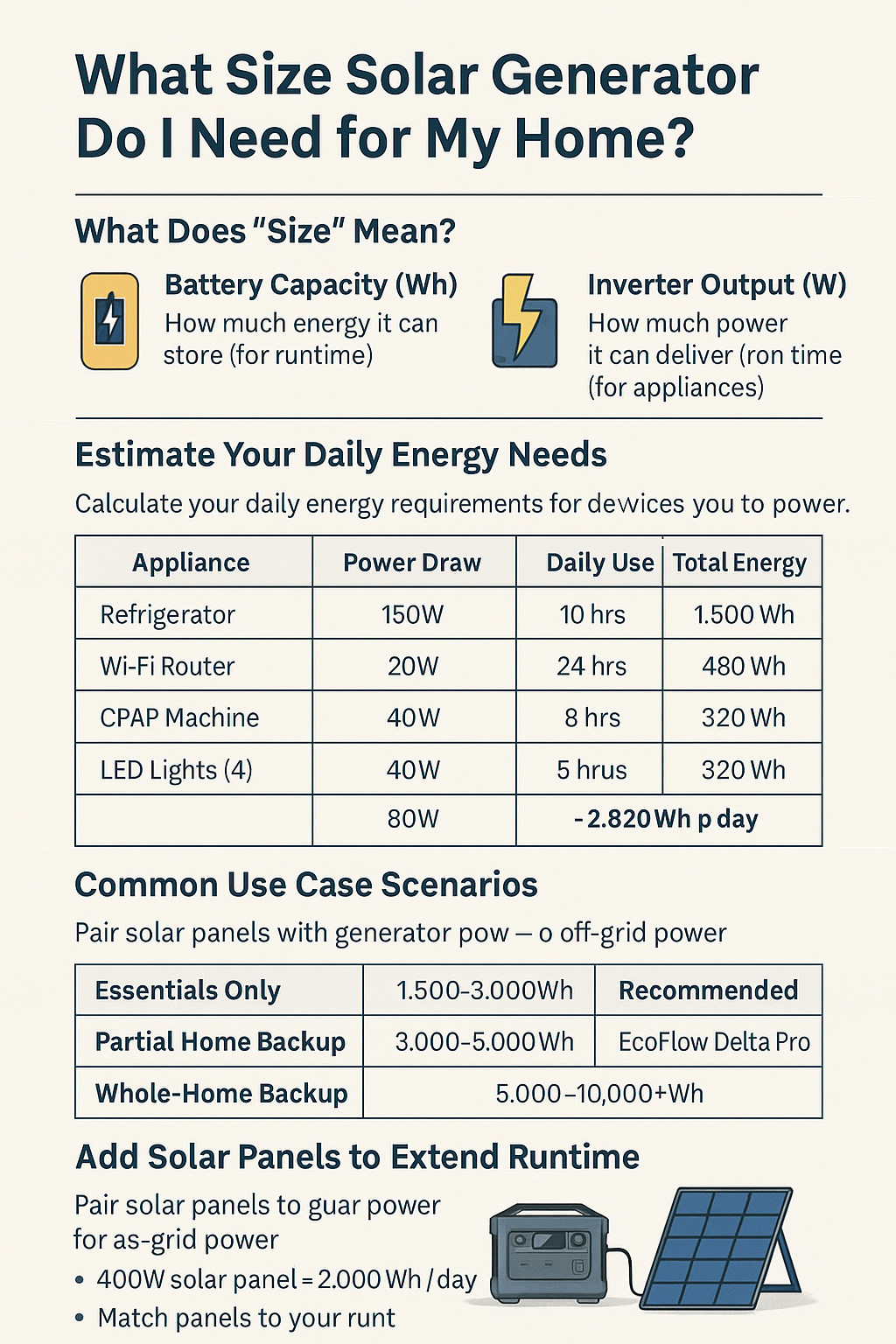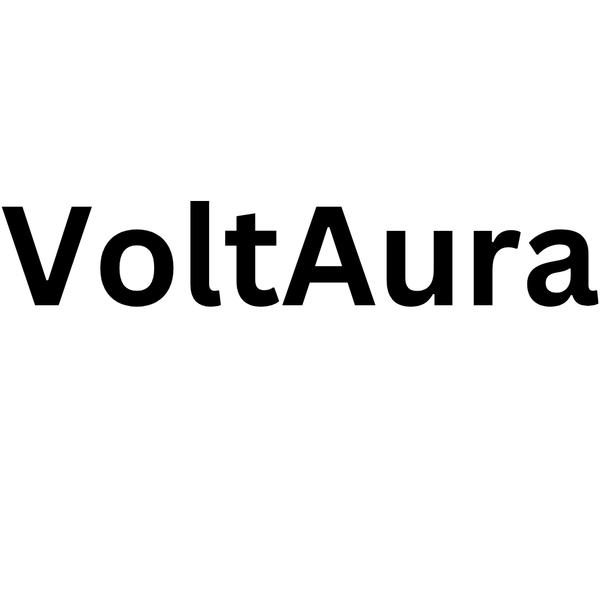
What Size Solar Generator Do I Need for My Home?
Share
What Size Solar Generator Do I Need for My Home?
Looking to power your home with a solar generator, but not sure what size you need?
You’re not alone.
Sizing a solar generator is the #1 question homeowners ask — and getting it right means avoiding power failures or overpaying for unused capacity.
In this guide, we’ll break down:
-
✅ What “size” really means (Wh vs W)
-
✅ How to calculate your home’s energy needs
-
✅ Which models are best for whole-home backup, partial coverage, or essentials-only use
⚡ What Does "Size" Mean in Solar Generators?
When shopping for a solar generator, size refers to two things:
| Feature | What It Means |
|---|---|
| Battery Capacity (Wh) | How much energy it can store (for runtime) |
| Inverter Output (W) | How much power it can deliver at one time (for appliances) |
Think of it like your car:
The battery capacity is the size of the gas tank.
The inverter output is how much horsepower you have.
🧮 Step 1: Estimate Your Daily Energy Needs
To size your solar generator correctly, you need to total the watt-hours (Wh) for the devices you want to power.
| Appliance | Power Draw | Daily Use | Total Energy (Wh) |
|---|---|---|---|
| Refrigerator | 150W | 10 hrs | 1,500Wh |
| Wi-Fi Router | 20W | 24 hrs | 480Wh |
| CPAP Machine | 40W | 8 hrs | 320Wh |
| LED Lights (4) | 40W total | 5 hrs | 200Wh |
| Laptop + Phones | 80W | 4 hrs | 320Wh |
Total: ~2,820Wh per day
💡 You’ll also want to factor in 15% energy loss from inverters and charging.
🏠 Common Use Case Scenarios
Here’s a quick reference chart for sizing:
| Use Case | Recommended Size (Battery) | Output Needed (Inverter) | Recommended Models |
|---|---|---|---|
| Essentials Only (fridge, lights, CPAP) | 1,500–3,000Wh | 1,000–2,000W | Jackery 2000 Plus, Bluetti AC200MAX |
| Partial Home Backup | 3,000–5,000Wh | 2,000–3,600W | EcoFlow Delta Pro, Anker SOLIX F2000 |
| Whole-Home Backup | 5,000–10,000+Wh (expandable) | 3,600–7,200W | EcoFlow Delta Pro + Extra Battery |
☀️ Add Solar Panels to Extend Runtime
Solar panels allow you to recharge your generator daily and go completely off-grid.
-
400W panel = ~2,000Wh/day in good sun
-
Match your panels to your generator’s input wattage (not just battery size)
Example:
The EcoFlow Delta Pro supports up to 1,600W solar input — that’s 4x 400W panels for fast recharging.
🔥 High-Margin Models to Recommend
These options provide strong upsell value with high performance + long-term reliability:
✅ EcoFlow Delta Pro – Best for Whole Home
-
3,600Wh base, expandable to 25,000Wh
-
3,600W inverter (surge 7,200W)
-
Solar input: 1,600W
-
EV-level battery, smart app, and home integration ready
✅ Bluetti EP500Pro – Best for High Power Appliances
-
5,100Wh battery
-
3,000W pure sine wave inverter
-
UPS mode + smart app
✅ Anker SOLIX F2000 – Best Smart Features for Partial Backup
-
2,048Wh battery
-
2,400W output
-
App tracking, fast solar input, quiet operation
🧠 FAQ: What People Also Ask
🔹 How big of a solar generator do I need to power a house?
For whole-home use, look for 5,000Wh+ battery capacity and 3,000W+ output. Consider expandable models like EcoFlow Delta Pro.
🔹 Can I run a refrigerator and freezer with a 2,000Wh solar generator?
Yes — for about 10–15 hours depending on energy efficiency. Add panels to recharge daily.
🔹 What happens if my generator is too small?
You’ll either trip the inverter (power cut) or run out of battery too quickly during an outage.
✅ Final Verdict: Know Your Needs Before You Buy
A solar generator is a long-term investment. Sizing it correctly ensures:
-
⚡ You power what you need — without surprise outages
-
🔋 You don’t overpay for unused capacity
-
🔧 You can expand later with extra batteries or panels
Want help finding the perfect match?
👉 Talk to the VoltAura.solar team — we’ll build a custom quote based on your home, lifestyle, and power needs.
